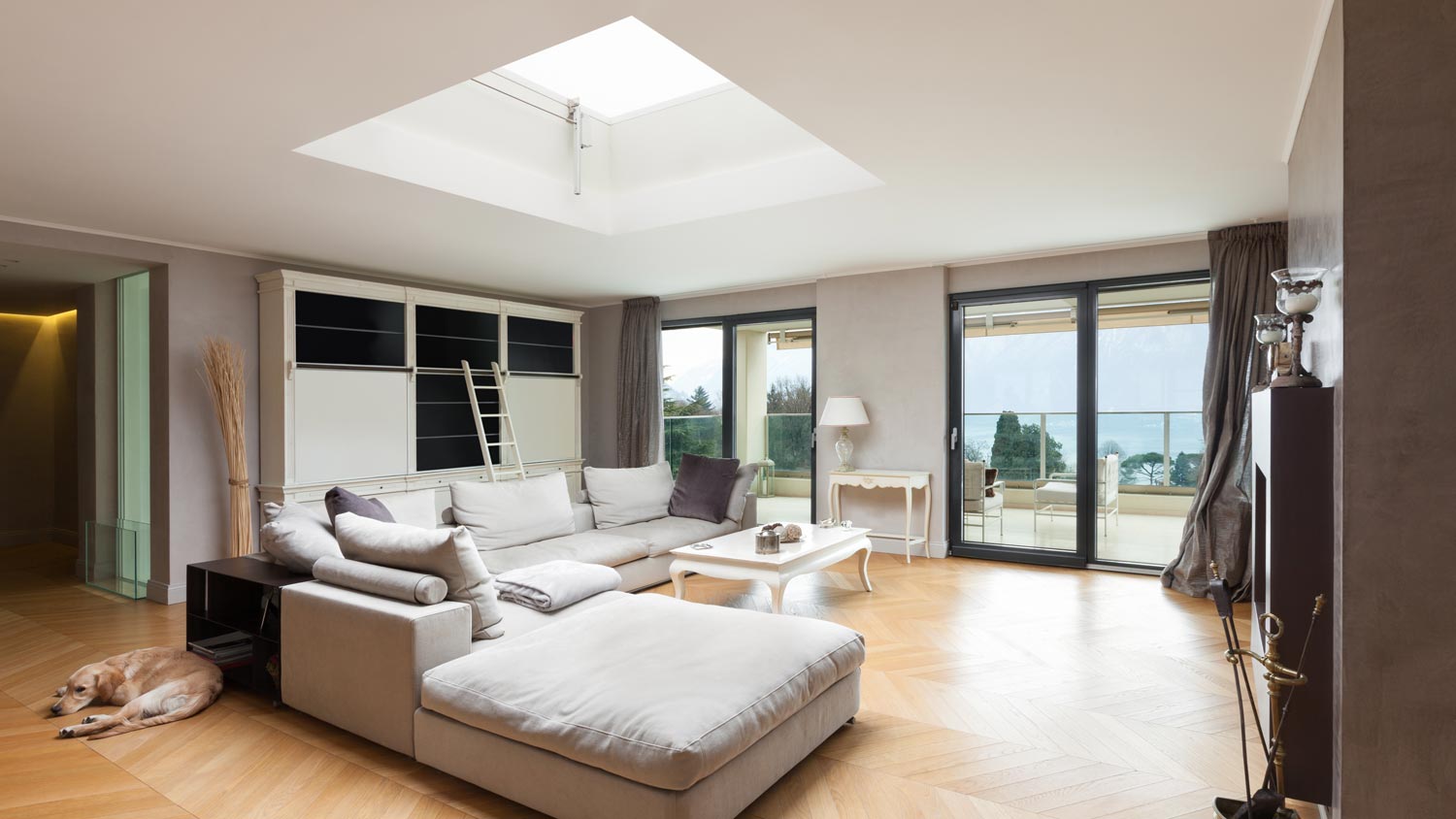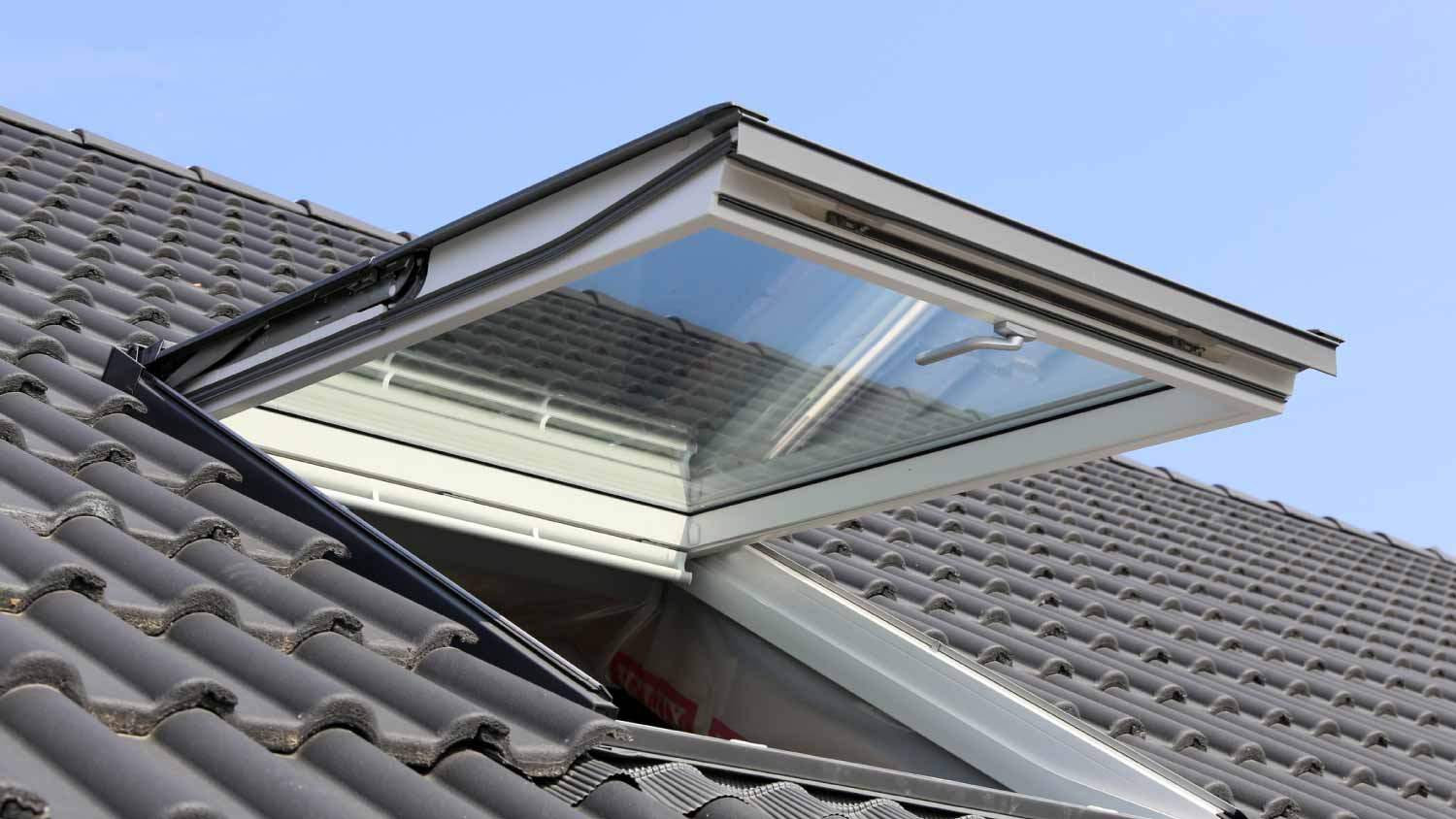What You Need to Know About Skylight Shades Before You Buy
No shade to skylights, but sometimes they need to be covered up


Skylights can add so much to a space, but there’s no denying that they’re trickier to cover up than a typical window. All the extra light and warmth they bring into home isn’t always a plus, especially when it’s hot outside and you’re trying to keep cool, or you can’t enjoy your afternoon nap because of all the sunshine.
In these cases, skylight shades can allow you to have the best of both worlds: a bright sunny abode or a dark, cool one whenever you want. Keep reading to find out more about why you should consider investing in skylight coverings, as well as all your options and how to pick the best one for your setup.
Why You Should Install Skylight Coverings
All the things that make skylights a bonus during certain times of the year also make them a drawback at other times. Because they allow more light and heat into a space, they can be hugely beneficial during winter when both are in short supply. However, they can also mean the difference between a hot house and a cool one when the temperatures are high.
Fortunately, skylight shades give you full control over when you do or don’t want to let extra light in. Like other window treatments, these coverings minimize the amount of light and heat entering your home in varying degrees. And they are sold in a huge variety of styles that suit all kinds of personal preferences. Some are lighter and thinner and still allow some light through but give you extra privacy, while others can completely black out your space.
Being able to control the light entering your home also allows you to better protect certain surfaces from fading. For example, you can shut a skylight shade whenever the light is pointed directly at your designer couch or parquet flooring.
5 Types of Skylight Shades to Choose From

There are countless different skylight shades on the market, but these are the five styles that you’re most likely to see. Learn the pros and cons of each option below.
Manual
This type of skylight covering includes any and all options that need to be closed manually. Many skylight styles are sold in both manual and motorized versions, and the former tend to be less expensive than the latter.
Motorized
Motorized skylight shades close and open at the touch of a button, and this additional convenience comes at an extra cost. In general, you’ll pay more for motorized options because of the special materials and labor that’s involved in installation. Though some kits allow you to install them yourself, you may have to hire a window pro in your area for more complicated undertakings.
Blackout
Blackout skylight shades prevent any and all sunlight from entering your space, and are especially desirable in places where temperatures are consistently high or the sun sets late. Blackout skylight coverings may not be the best option for you if you live somewhere more temperate where you may not have as much of a need to block out the light or heat.
Cellular or Honeycomb
This type of skylight covering is both aesthetically appealing and ideal for energy-saving purposes. A unique raised and folded texture traps and prevents heat from escaping your home in the warmer months, as well as preventing heat from entering your home in the cooler months. You can find cellular or honeycomb skylight shades in both manual and automatic versions.
Venetian
Also known as louvered blinds, Venetian skylight coverings consist of many horizontal slats that can be opened and closed either manually or automatically. While this type of window treatment is beloved for its timeless aesthetic appeal, the gaps between slats allow heat to escape or enter a home more easily than cellular shades.
5 Tips to Choose Skylight Covers That Are Right For You

You have to know a bit about the dimensions, style, and location of your skylight before you can choose the best window treatment for the job. Here are all the factors to take into account before making your final purchase.
1. Identify the Type of Skylight
There are many different types of skylights, and knowing which one you have will narrow your search for coverings. Skylight types include flared, straight, shaftless, fixed, tubular, and vented, and—while it’s possible to find shades adapted to each type—you’ll encounter issues if you buy the wrong kind. Double check the product specifications before buying to ensure that your choice will fit your particular setup.
2. Evaluate the Location
Where exactly a skylight is in your home can also help you determine which kind of window treatment is best. For example, you may want to opt for blackout shades in spaces that need complete darkness, like bedrooms. But you may be better off with light-filtering coverings in areas like the kitchen, where extra light is always a plus, but it would be nice to keep the heat out.
3. Find the Dimensions
Whip out your measuring tape and write down the dimensions of your skylight before you begin your search for shades. If you have a custom skylight, you may also need to have custom shades made.
4. Consider Your Decor
Look for skylight coverings that match the rest of the design elements in your space. In minimalist, Japandi spaces, opt for honeycomb coverings to complement that aesthetic. On the other hand, white or cream-colored Venetian blinds are a great option for a coastal-inspired home.
5. Consider the Framing
The type of frame that surrounds your skylight, whether it be metal or wood, will also impact how your shades look. For example, you don’t want two completely mismatched pieces of wood.
Installing Skylight Shades Yourself vs Hiring a Pro
While it is possible to install skylight shades yourself, it will require varying degrees of knowledge and skill to do correctly. You can find do-it-yourself installation kits, and some manual options can be easily hung with only a few tools (like a hammer and some nails). However, installing automatic skylight shades may require new or rewiring and electric work. In general, this job is better and safer when left to the pros.















